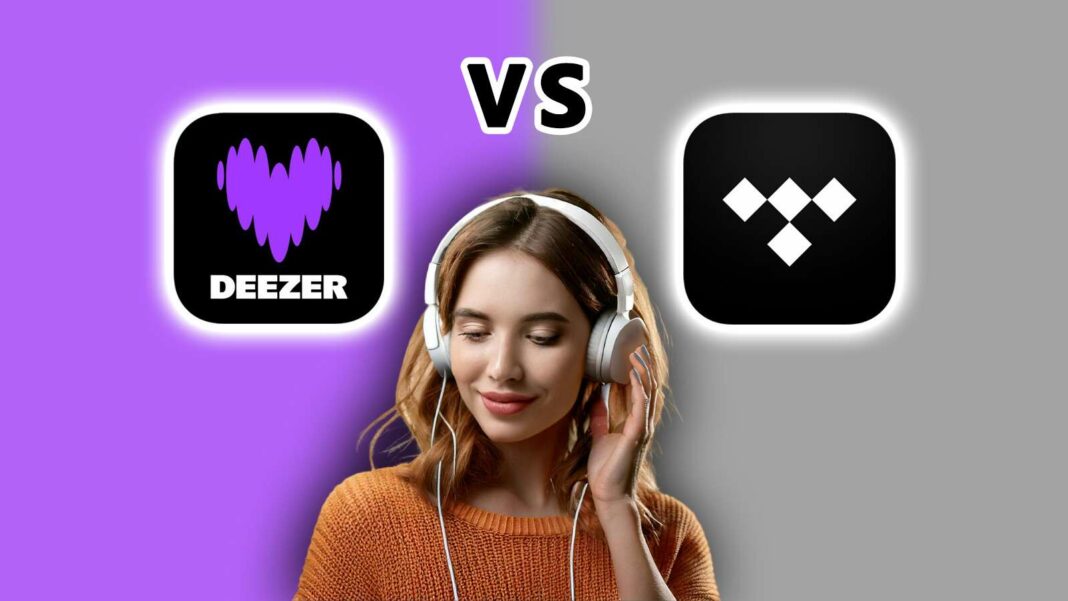The article compares two prominent music streaming services, Deezer and Tidal, highlighting their unique features, user interfaces, pricing, and audio quality. While both platforms excel in offering over 100 million songs, Deezer stands out with innovative options like Deezer Flow and SongCatcher, while Tidal prioritizes artist support and curated playlists. The comparison concludes that each service has its strengths, with personal preferences influencing the choice, particularly concerning podcasts and audio quality.
For years, Spotify has been the leader in the music streaming arena. Recently, however, other platforms like Deezer and Tidal have carved out significant market share, each offering unique features and artist support, catering to different music preferences.
Comparing Deezer and Tidal: User Interface and Applications
User experience plays a pivotal role in the success of a music streaming service. This is equally true for their applications, including design and layout. Deezer and Tidal distinctly stand apart visually.
Both services can be accessed via smartphone apps, desktop applications, and web players, along with various methods for streaming to compatible devices like smart TVs, Bluetooth speakers, or car infotainment systems.
When it comes to their mobile applications, Deezer and Tidal share a straightforward layout, making navigation effortless. However, they significantly differ in design philosophy. Tidal adopts a more classic approach, while Deezer’s aesthetic is vibrant and youthful, featuring a kaleidoscope of colors— a refreshing contrast if you’re accustomed to platforms like Spotify or Apple Music.
Subscription Plans and Pricing Overview
Your personal circumstances may lead you to prefer one subscription plan over another. While both Deezer and Tidal provide unique subscription options, Deezer boasts a broader range.
Deezer’s Subscription Options
Tidal’s Subscription Options
For Tidal users, there’s a specialized option known as the ‘DJ Extension’ available for those in music production or DJing for an additional 9 euros per month. This feature grants access to individual audio tracks from selected songs, enhancing the experience for DJs by integrating with software like Serato, Rekordbox, or VirtualDJ.
Common Features and Functions of Deezer and Tidal
Since Tidal does not provide a free tier, we will compare their individual premium plans: Deezer Premium versus Tidal Individual.
Analyzing the offerings of these premium subscriptions reveals several common features also found across other streaming platforms. Deezer and Tidal share some of these functionalities, providing a familiar experience.
Unique Features of Each Service
Exclusive features make each platform intriguing in its own right. In recent years, Deezer has taken a unique approach, diverging from traditional features seen in typical music streaming services. Conversely, Tidal prioritizes the needs of music enthusiasts and artists alike.
Unique Features of Deezer
Deezer provides three standout features not available on other platforms: Deezer Flow, SongCatcher, and a music quiz.
Deezer Flow utilizes an algorithm to assess your listening habits, presenting a curated mix of favorite tracks alongside new finds. The platform claims its AI improves recommendations over time, allowing users to start the Flow with specific genres or moods, enhancing personalization.
SongCatcher acts like an in-built Shazam, identifying songs playing around you. This feature allows users to instantly add recognized tracks to their favorites or playlists. Notably, it even claims to recognize music from humming or singing.
Additionally, Deezer’s music quiz challenges your musical knowledge, offering solo play or competitive modes with friends, categorized by genre, artist, or era.
Unique Features of Tidal
In terms of innovation, Tidal falls a bit short compared to Deezer, focusing mainly on enhancing the user experience for music lovers. One notable feature is the Live function, which enables users to create sessions that friends can join.
This feature has an interesting benefit: if a session includes 15 participants, each counts as a single stream for the artist, thus supporting the artists directly through user engagement on the platform.
With Tidal Rising, users can discover lesser-known artists through curated playlists like ‘Germany: Rising.’ These playlists highlight emerging talent, providing opportunities for these artists to gain exposure and potentially thrive in their musical careers.
Music Library, Recommendations, and Playlists
Deezer and Tidal both boast extensive music libraries, with over 100 million tracks available. Deezer includes podcasts and audiobooks, albeit in a more limited selection compared to competitors like Spotify.
On the other hand, Tidal’s focus is primarily on music, lacking podcast offerings, yet it compensates with exclusive documentaries and interviews that enhance its content variety.
Deezer Flow’s song suggestion feature has impressed users, yielding solid recommendations after some training. After
